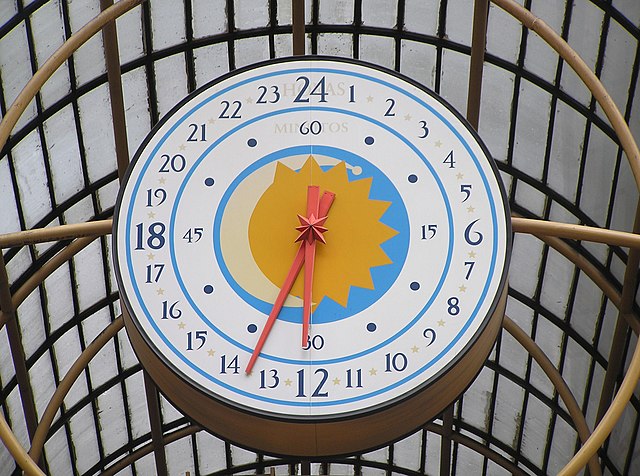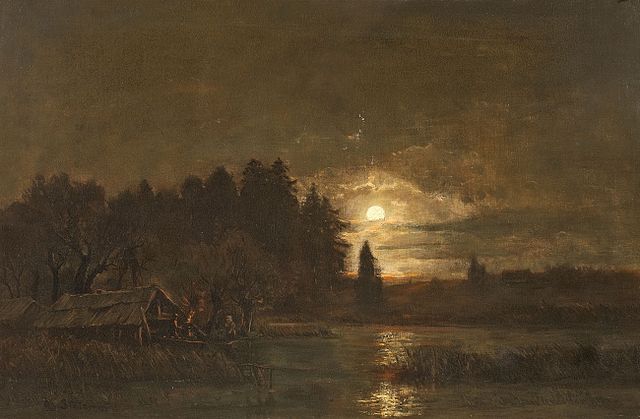The modern 24-hour clock is the convention of timekeeping in which the day runs from midnight to midnight and is divided into 24 hours. This is indicated by the hours passed since midnight, from 00(:00) to 23(:59), with 24(:00) as an option to indicate the end of the day. This system, as opposed to the 12-hour clock, is the most commonly used time notation in the world today, and is used by the international standard ISO 8601.
A public 24-hour clock in Curitiba, Brazil, with the hour hand on the outside and the minute hand on the inside.
24-hour digital clock in Miaoli HSR station.
24-hour clock as seen on the USS Midway.
Paolo Uccello's Face with Four Prophets/Evangelists (1443) in the Florence Cathedral
A day is the time period of a full rotation of the Earth with respect to the Sun. On average, this is 24 hours. As a day passes at a given location it experiences morning, noon, afternoon, evening, and night. This daily cycle drives circadian rhythms in many organisms, which are vital to many life processes.
Decimal clock face, made in around the start of the 19th century
Night in art
Image: Midtown Manhattan from Weehawken September 2021 panorama 1
Image: Midtown Manhattan from Weehawken September 2021 panorama 2








